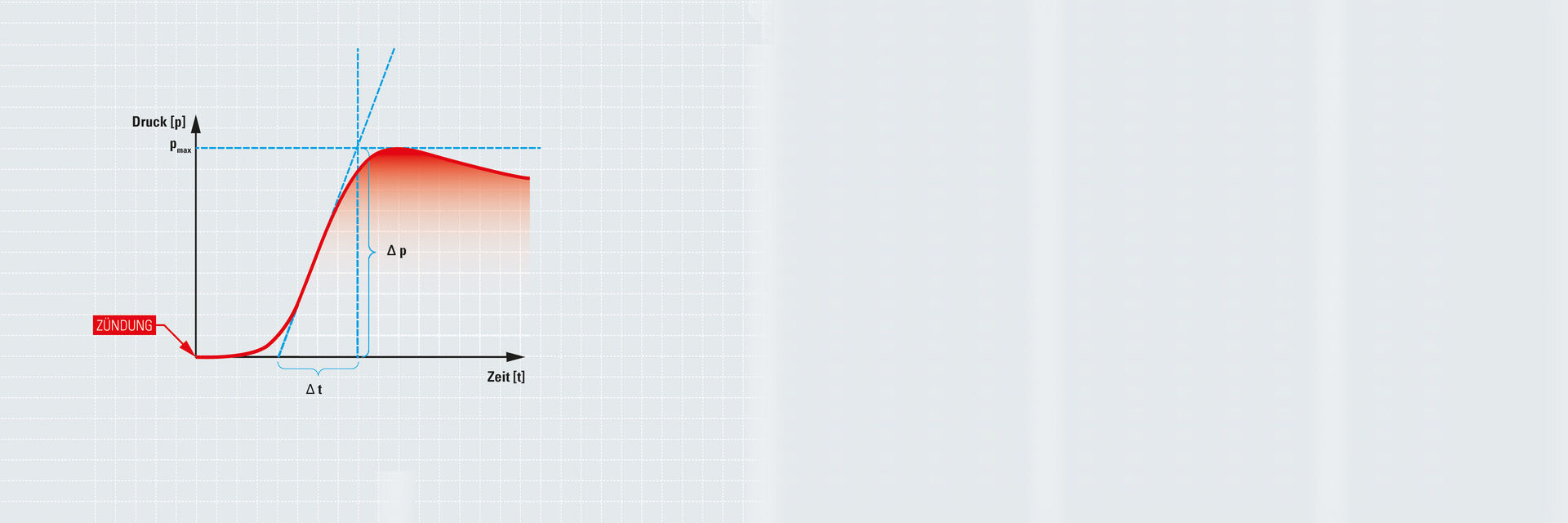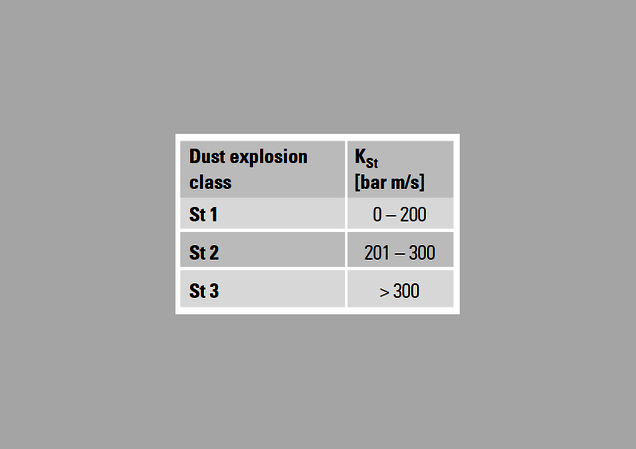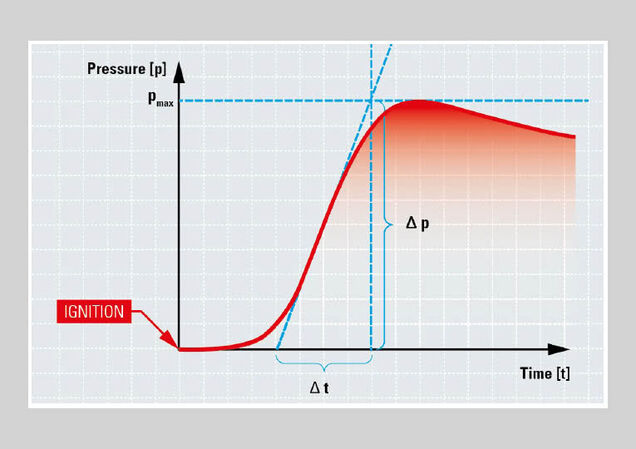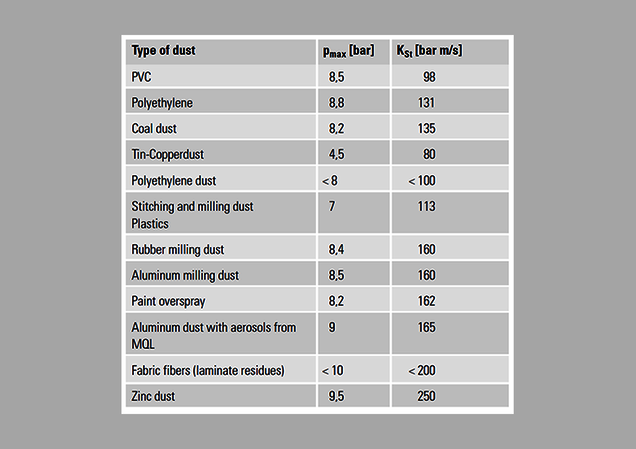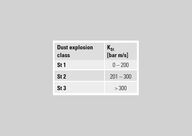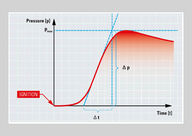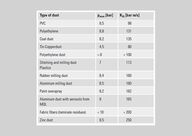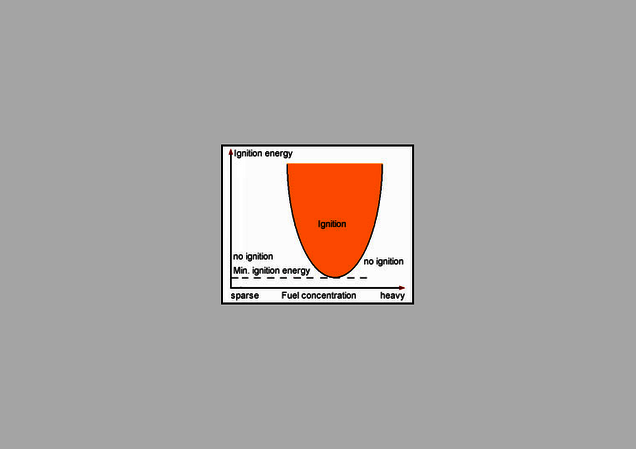What is a Dust Explosion?
The topic of “explosion of combustible dusts combined with oxygen” as it relates to air pollution control systems, also described as dust explosion, is covered here.
A dust explosion is an exothermic, unstable reaction which can be assigned to explosion category deflagration (instantaneous combustion).
Additional categories are low-scale explosion and explosion.
Instantaneous Combustion
is a very fast process of combustion with quick-response and considerable pressure increase which is caused by rapidly expanding gases. The flame speed is some 100 m per second. Pressure increases by 10 bar (1 MPA) or higher, depending on the fuel.
Housing
The intensity of the dust explosion is determined by the dust volume, by the ratios of reactants as well as by the extent of the housing. Closed filter housings represent a full housing.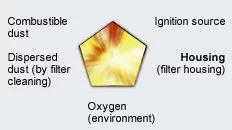
A Precondition for a Dust Explosion is an Explosive Environment
A dust explosion does not occur by chance. Reactive substances with proper mixing ratios do create a potentially explosive situation. For dust explosions, organic and combustible metallic dusts are potential reactants. Air supplies the additional reactant, oxygen.
Explosive Environment
A criterion for a dust explosion is dispersed dust consisting of a mix of dust particles of various sizes plus air molecules. The differences in density generate a continuous circulation that creates a homogeneous mixture. As soon as a specific dust density is achieved below certain particulate dimensions, an explosive environment is produced. However, in general, explosion limits are not limited to a certain particle size of combustible dust. Explosion limits (LEL, lower explosion limit) can only be detected by performing specific tests.
Ignition Source
An explosive environment does not immediately develop a reaction!
To release an explosion, an ignition source must additionally be available. This also includes the ability of a substance to spontaneously combust.
Explosion Pressure and Explosion Severity
The maximum explosion pressure pmax is significantly influenced by the housing.
The rapid pressure increase dp/dt reflects the potential severity of an explosion. It is defined as primary point of origin in the deviation point of the pressure/time curve and used as parameter (KSt value) for classification into dust explosion classes St 1, St 2 and St 3.
The test requirements to determine the KSt value and pmax are outlined in VDI 3673 page 1 and VDI 2263 page1 as well as ISO 6184-1
An in-depth overview is provided in the GESTIS-STAUB-EX database >
Minimum Ignition Temperature and Minimum Ignition Energy
Minimum Ignition Temperature
The lowest temperature of a hot surface at which the most ignition-sensitive mixture of an explosive environment (dust cloud) ignites is determined under defined test conditions.
The minimum ignition temperature is of great importance for filter systems, since a fan motor can heat up surfaces. Hence, the maximum surface temperature has to lie 2/3 below the minimum ignition temperature of the dust cloud.
Examples Minimum Ignition Temperature
Lowest temperature required for an ignition.
| 350°C |
| 430°C |
| 500°C |
| 550°C |
Minimum Ignition Energy
The minimum ignition energy is an important factor for the design of protective measures.
The least amount of energy stored in a condenser, which cannot ignite the most ignition-prone mixture in an explosive atmosphere at 20 times the discharge in succession, is determined under specific test conditions.
Please take into consideration that the most critical point for an ignition often occurs during system start and stop times. The ignition temperature is higher for heavy or sparse dust-air-mixtures.
The Classes of the Minimum Ignition Potential:
| Ignition Sensitivity | MIE (mJ) |
| Normal | MIE > 10 |
| Specific | MIE < 10 |
| Extreme | MIE < 3 |
Examples Minimum Ignition Energy
The least amount of energy required to create an ignition is indicated below.
| 5 mJ |
| 3-10 mJ |
| 10 mJ |
| > 10 mJ |
| 10-30 mJ |
| 10-30 mJ |
| 100 mJ |
| 100 mJ |
| 100 mJ |
Additional Factors
Pressure and Temperature
The upper explosion limit moves upward if pressure and temperature increase.
An increase in the start pressure (system’s working pressure) leads to an increase in explosion pressure and explosion severity. This can escalate to a detonation.
Dust Particle Size
The combustive reaction of an explosion occurs on the particle surface. The finer the dust, the more surface available for a reaction – and the greater the explosion pressure and explosion severity.
The seemingly obvious solution of coarser dust is not suitable as a protective measure since a 5 – 10 % ratio of fine dust is adequate to ignite an explosion.
Instability
Any prevailing instability in an explosive atmosphere can lead to higher explosion pressures upon ignition and to a 10-fold higher explosion severity.
Spontaneous Combustion
Since large dust accumulations cannot be prevented, their ignition temperature must be controlled.
Explosive Materials
Organic Dusts
such as plastics similar to CFC, GRP, GMPU, including carbon, powder, cocoa, starches, lumber, fibers, feedstuff, as well as paint and spray dusts.
Dusts from the treatment and processing of these products and substances are flammable and are assigned to dust explosion class ST 1.
Metallic Dusts
Typically, metallic dusts are minerals such as magnesium, aluminum and fine blasting dust such as steel.
With a particularly small particle size (e. g. dust) even substances that are not normally combustible in solid form, can suddenly ignite.
The very large surface area of metallic dust particles generates heat quickly and presents an explosion hazard.
All information on the relevant standards and guidelines can be found here:
Standards & GuidelinesBrochure "Explosion Protection According to ATEX Guidelines"
Download Broschure
